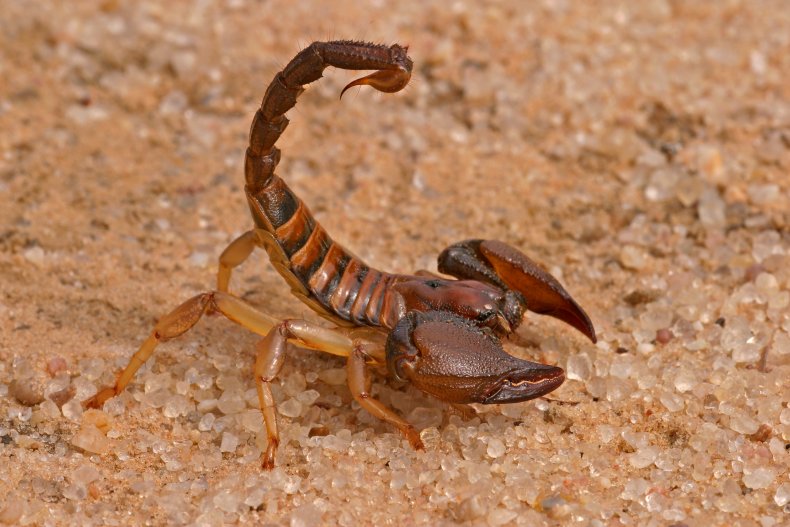What would it take for you to step into a house filled with thousands of scorpions?
That was debated on Reddit, where a video of seemingly thousands of the invertebrates gave chills up and down users’ spines in a thread that has been upvoted over 30,000 times.
The origin of the video or where it was recorded is unclear. The house was described as “abandoned,” at least in terms of humans living there.
Due to the reported Portuguese accent in the recording, some assumed that the video was recorded in Brazil and that the species of scorpion is Tityus serrulatus, which is native to Brazil.
“They are parthenogenic, meaning they can give birth without mating so that will explain their numbers,” one Redditor explained.
“I’m from Brazil, the same country as the video,” another user said. “We do have a problem with the occasional scorpion crawling out of the sewer like a cockroach. We also have a saying, ‘Good thing God doesn’t give the snake wings.'”
One Redditor suggested using ultraviolet light to make the scorpions glow. Most others wanted absolutely nothing to do with them, with one saying the scene is “the stuff of nightmares.”

iStock/Getty Images
Scorpions are part of the class Arachnida, according to National Geographic, and are closely related to spiders, mites and ticks. While routinely thought to be living in deserts, they also live in British Columbia, North Carolina, the Himalayas, and in Brazil as mentioned previously.
Redditors wondered how the uncountable amount of scorpions survived in the dwelling without food sources, as they usually eat insects. But as National Geographic described, their diet varies and aids the species in “harsh locales.”
That includes “an amazing ability to slow its metabolism to as little as one-third the typical rate for arthropods.”
There are about 2,000 species of scorpions, though only 30 to 40 of them have venom strong enough to kill humans.
The Mayo Clinic says that young children and older humans are most susceptible to the effects of scorpion venom, and that “deaths from these stings are a significant public health problem in areas where access to medical care is limited.”
The bark scorpion, which inhabits the desert Southwest in the United States, is described as the only such domestic species “with venom potent enough to cause severe symptoms.”
According to Arizona State University, the deathstalker scorpion is described as one of the world’s deadliest scorpions due to a tail full of venom–so painful, in fact, that it causes paralysis. But rather than attack humans, the species is most prone to use its venom against its main food source, crickets.
The National Center for Biotechnology Information (NCBI) explains that while neurotoxins are the main components of scorpion venom, “a wide range of other bioactive molecules” are found in venoms. Studies of scorpion venom have shown that not only are better treatments being formulated to prevent the effects of human stings, but also that the venom can be used for more therapeutic causes.
“Scorpion venom may not only be a medical threat to human health, but could prove to be a valuable source of bioactive molecules that may serve as leads for the development of new therapies against current and emerging diseases,” the NCBI said.
And venom is not cheap, either. Insider reported that the venom of the aforementioned deathstalker scorpion costs about $39 million per gallon on the open market, mostly because scorpions tend to produce very minute amounts of venom at one time.
In March, researchers from San Diego State University in California shared a video showing a western banded geckos ferociously taking down a scorpion in slow motion, likely to immobilize the arthropod.
In 2021, Chinese researchers discovered the fossilized remains of a sea scorpion that grew over 3 feet in length and used a spinal arrangement to successfully snag prey.
That discovery occurred about a year after researchers in Australia warned about scorpions taking over burrows across the country.
